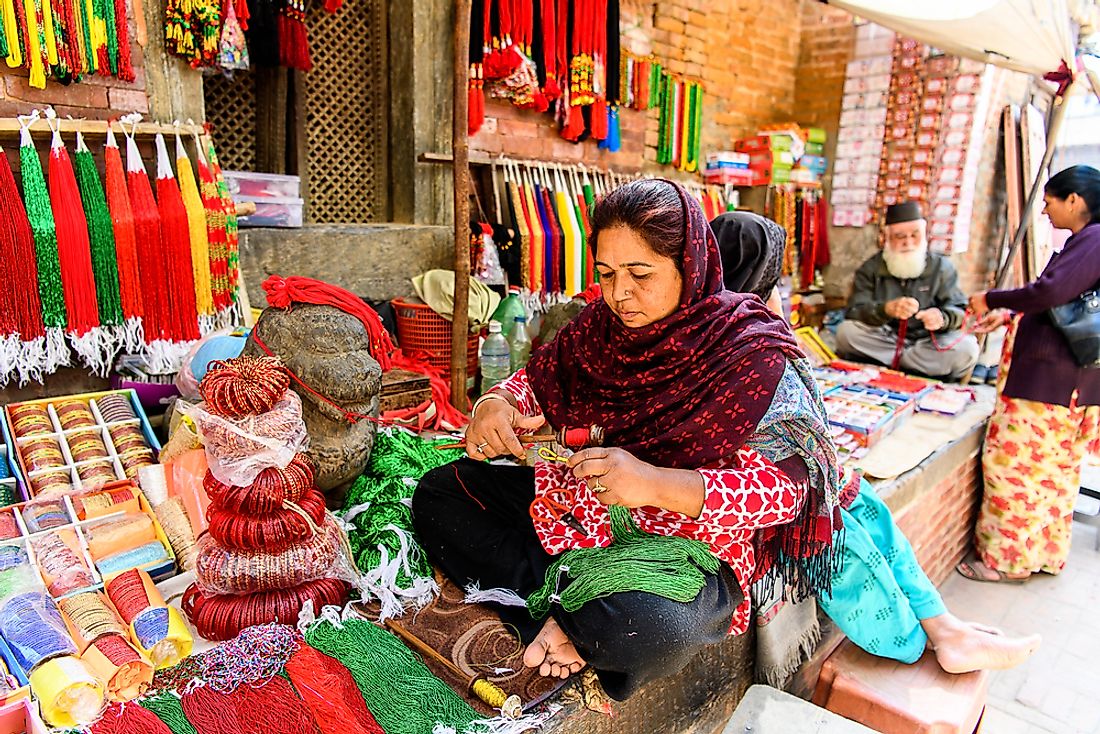Largest Ethnic Groups In Nepal

The Federal Democratic Republic of Nepal is one of the countries forming the South Asian region. The landlocked country is bordered by China, India, Bangladesh, and Bhutan. Nepal has a total land area of 147,181 square kilometers, the 93rd largest country in the world. Nepal is a multi-ethnic country with Nepali being the official language. The country has a population of over 27 million people with an average family size of 4.9. Nepalese are divided into different ethnic groups or according to the national origins. Nepalese equate their nationality to citizenship rather than ethnicity. Some of the largest ethnic groups in Nepal are looked at below.
Chhetri
The Chhetri are considered the largest ethnic community in Nepal, comprising 16.6% of the population according to the 2011 census. Chhetri belongs to the Indo-Arya which is part of the Kshatriya varna, and speak mainly Nepali. The majority of the Chhetri (99%) belong to the Hindu religious group while the remaining minority is Buddhists. However, Masto is considered the ancient religion and involves the worship of nature. Chhetri, formerly known as Khas, are connected to Khasas who are famous in the in the Indian literature and Medieval Khasa Kingdom. Chhetri is further divided into several subgroups including Thakuri and Khasa. Early marriage characterizes this ethnic group. However, they do not allow cross-cousin marriage which is common among other Hindu communities.
Bahun
Bahuns are the local Nepalese who practice Vedic or Brahmin traditions. The Bahun is the second largest ethnic group in Nepal accounting for 12.2% of Nepalese. Vedas and Brahmin give this ethnic group their major identity. Vedas comprise of literature composed of old layers of Sanskrit texts and Hindu scriptures. Brahmins are priests and teachers who are charged with the responsibility of protecting the sacred learning. Bahuns are considered a religious ethnic group with traditional religious rituals performed in the temple including rites of passage, prayers, and temple duties. The majority of Bahun are Hindu, with a significant number of others being Buddhists.
Magar
The Magar are one of the oldest ethnic groups in Nepal. Magars occupy the southern and western parts of the Dhaulagiri area. The ethnic group forms 7.1% of Nepali population according to the 2011 census, the third largest ethnic group in the country. Magar and his brother Chintoo are said to have disagreed with Magar settling in Seem. Magar became powerful with time. Magar is therefore considered the oldest and the largest indigenous ethnic group in Nepal. The ethnic group is subdivided into septs (clans), sub-septs, and gotras. The majority of this ethnic group speaks Magar Language. The major original religion practiced by Magar included Shamanism and Tengriism, but currently Hindu is the prominent religion among the community. Magar have been well known for their exceptional services in the military, especially in the British Army.
Tharu
The Tharu people are indigenous to the Terai region, and are recognized as official citizens by the government of Nepal. Tharu account for 6.5% of all Nepalese, making them the fourth largest ethnic group in the country. They are associated with the forest and have lived in forest areas for many years with the cultivation of rice, lentils, corn, and mustard being the major economic activity. Tharu believes in several gods with prayers being a common ritual before entering the forest. However, Hindu is a dominant religion among the modern Tharu.
Other Ethnic Groups in Nepal
The Tamang, Newar, Kami, Madheshi Muslims, Yadav, and Rai peoples collectively constitute around 25% of the Nepalese population. Hindu is the dominant religion in Nepal with Buddhism also dominating portions of the ethnic groups. These ethnic groups are distinct in their cultural practices, both in their religions and traditional ways of daily life.
Largest Ethnic Groups In Nepal
| Rank | Ethnic Groups and Castes of Nepal | Share of Nepalese Population |
|---|---|---|
| 1 | Chhetri | 16.6% |
| 2 | Bahun | 12.2% |
| 3 | Magar | 7.1% |
| 4 | Tharu | 6.5% |
| 5 | Tamang | 5.8% |
| 6 | Newar | 5.0% |
| 7 | Kami | 4.7% |
| 8 | Madhesi Muslims | 4.4% |
| 9 | Yadav | 4.0% |
| 10 | Rai Other Groups | 2.3% Less than 2% each |











